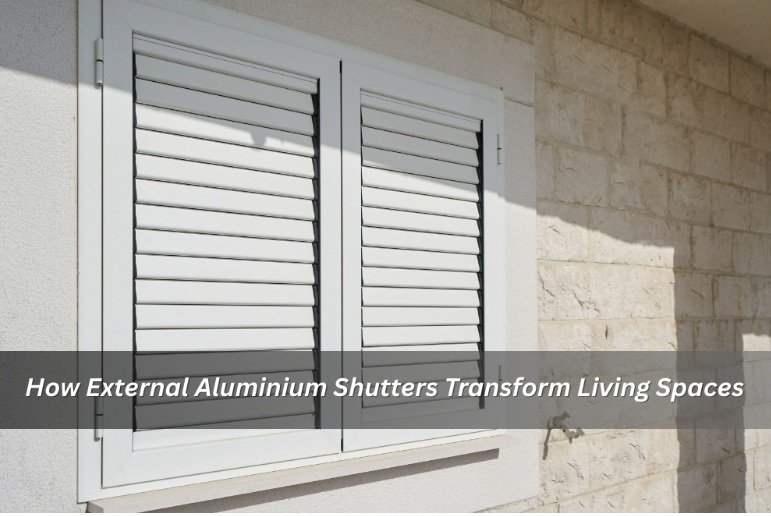
When I first decided to do something about the late-afternoon heat flooding my lounge room, I figured I’d just throw up some heavy curtains and call it a day. Then a neighbour mentioned external aluminium shutters, and I thought, why not give them a go? I wasn’t chasing a complete home makeover — just a way to make the space a bit more livable.
A few weeks later, I noticed they’d done far more than block the sun. The rooms felt calmer, the glare was gone, and the outside of the house had this neat, finished look I didn’t even realise it was missing. Friends started commenting on how different the place felt. I wasn’t trying to impress anyone, but there’s something about shutters that quietly changes both the look and the feel of a home without making a big show of it.
One thing I didn’t think about at the start was how shutters could make a place safer. Especially if you’ve got kids running about. The whole shutters window coverings thing isn’t just some random guideline — it’s a serious issue. I’ve seen old blinds with dangling cords in rentals before, and it made me nervous even as a visitor.
With the shutters, there are no cords, no loose bits, nothing for little hands to get tangled in. Plus:
I didn’t get them for safety, but now that I’ve lived with them, it’s one of those hidden benefits I wouldn’t want to give up.
When I started browsing options for plantation shutters external, I thought it’d just be “pick a colour, get them installed, done.” Turns out there’s a bit more to it. Hinged, sliding, bi-fold — each with its own use depending on the space. And the louvre width changes the look entirely.
A few lessons I picked up along the way:
In my case, I went for a mix: wider for the back deck doors, narrower for the street-facing windows. It kept the style consistent but still made sense for how I use each space.
Open-plan layouts are great — until the afternoon sun decides to turn your kitchen into an oven. That’s where styling shutters for open plan homes comes in handy. You don’t lose the sense of openness, but you can take control of the light and heat.
Some tricks I’ve found work:
A mate of mine did this during her renovation. She had a big glass wall at the back, which looked amazing, but made the whole space unbearable at 3 pm. Adding shutters solved the problem without killing the view — and now she actually uses the space at that time of day.
Australia’s not exactly uniform when it comes to weather. I’ve lived in a coastal unit and a suburban house, and external aluminium shutters worked in both — just in different ways.
Here’s what I noticed:
The best part? You don’t need a completely different product for each location. It’s more about small adjustments in material and finish.
It’s a small thing, but one of my favourite parts of having shutters is being able to see out without people seeing in. For a house on a busy street, that’s priceless. You can adjust the angle of the louvres to block the view from outside while still letting light spill in.
A few easy moves:
That balance between light and privacy means you’re not constantly opening and closing things. It’s just a quick adjustment depending on the time of day.
This one caught me by surprise. I live on a road where tradies’ utes start rolling past before 7 am. With the shutters closed, the noise drops enough that I can actually sleep in on weekends. They’re not soundproof, but the difference is enough to notice — and to appreciate when you’re trying to have a quiet coffee without the soundtrack of traffic.
For anyone in a similar spot, it’s not just about blocking views or light — it’s about creating a bit of a buffer from the outside world.
After living with external aluminium shutters for a while, I can’t imagine going back. They’ve changed the way I use my spaces — from cooling down the living room to making the house feel more private and secure. The best part? They just get on with their job without demanding attention.
It’s the kind of upgrade you only really appreciate after you’ve lived with it. And once you do, it’s hard to picture the house without them.
Unlock a Brighter Future: Why Solar Power is a Smart Investment
September 29, 2025Unlocking the Best Real Estate Investment Opportunities
September 26, 20257 Aircon Cleaning Tips Every Homeowner Should Know
September 22, 2025Finding Reliable Tenants with Top Property Management in Brisbane
September 9, 2025The Importance of Regular Electrical Safety Inspections
September 9, 2025